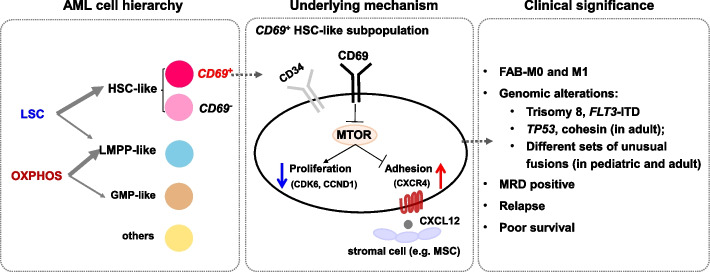Fig. 8.
Working model. In AML, HSPC-like leukemic cell populations exhibited one of two known chemoresistance-related expression signatures (LSC and OXPHOS) derived from mouse models (left panel). Among them, HSC-like leukemic cells characterized by the surface marker CD69 possessed chemoresistant capacity possibly via the CD69-mTOR axis. Suppression of the mTOR signaling pathway, in the CD69+ HSC-like cell subpopulation and CD69-overexpressing cell lines, might lead to cell quiescence via suppression of cell cycle regulators CCND1 and CDK6 (as shown in Figs. 5a and 6b, and Fig. S5a) and cell adhesion to stromal cells such as MSCs through the CXCR4-CXCL12 interaction (as shown in Fig. 6d, f). Patients with the CD69+ HSC-like subpopulation were associated with M0/M1 subtypes and specific genomic alterations and had worse clinical outcomes (right panel)

